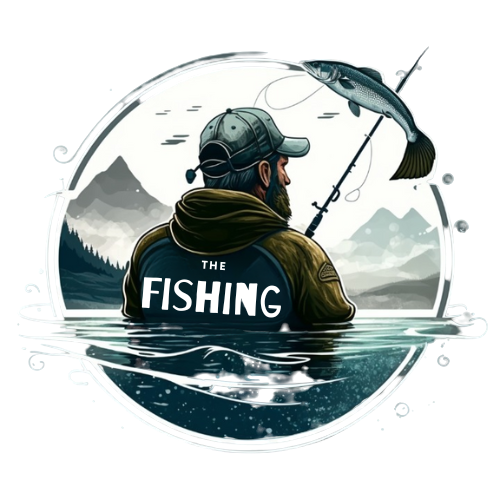We are always striving to improve our skills and techniques while also ensuring the safety and well-being of the fish we catch. One question that often comes up is does fly fishing hurt fish?
Do you love the peaceful and meditative experience of fly fishing, but worry about the impact it may have on the fish?
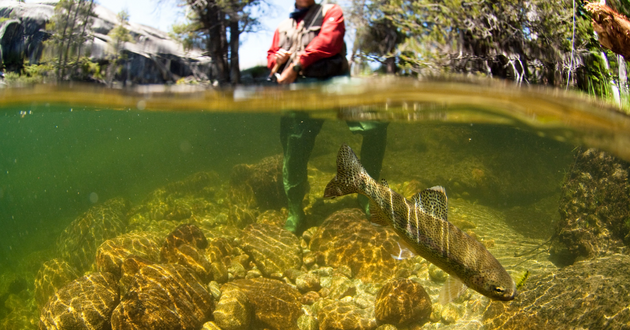
In this article, I’ll delve into the science behind fly fishing and explore whether or not it’s harmful to the fish we’re trying to catch.
Table of Contents
- Does Fly Fishing Hurt Fish?
- Why do fly fisherman not keep fish?
- Does catch and release kill fish?
- Does fishing hurt fish mouth?
- Survival rate of catch and release fish
- The Physical Impact During Catch and Release
- Potential for Injury or Mortality
- Some Methods May Be More Harmful Than Others
- Catch and release fishing laws
- Do fish feel pain or fear?
- Final thougts
Does Fly Fishing Hurt Fish?
Fly fishing, when done properly, does not hurt fish. Fly fishing aims to catch and release the fish, and using barbless hooks and proper handling techniques minimizes the risk of injury to the fish. However, if the fish is handled improperly or left out of water for too long, it can suffer from stress and potentially die. Fly fishermen need to be aware of and follow proper catch and release techniques to ensure the well-being of the fish.
You should also read: Does Fishing Hurt Fish? Untold Impact on Our Finned Friends
Good fly patterns and sizes can minimize the harm to the fish.
Using flies that are too large or unsuitable for the specific type of fish can cause the fish to struggle more, potentially causing harm. Fly fishermen need to research and understand the appropriate flies and techniques for the specific species of fish they are targeting.
So, You got the answer, but how about more deeply understanding. Sounds good?
Then take some time and learn more about how to fly fishing in a way that does not harm the fish.
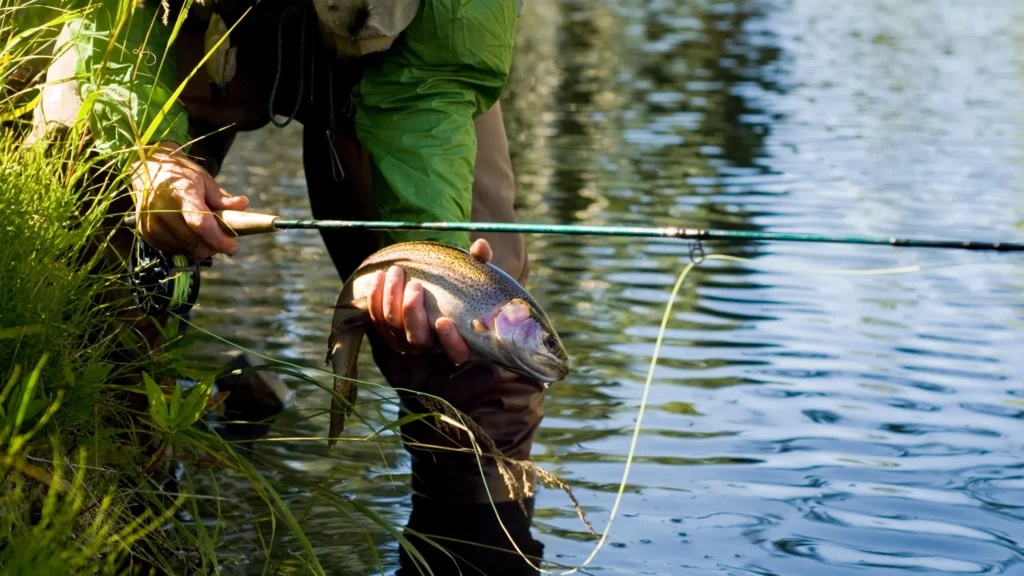
Why do fly fisherman not keep fish?
Fly fishermen do not keep fish because they believe in catching and releasing. That means they catch the fish but then release it back into the water so it can continue to live and reproduce.
Fly fishermen do this because they value the conservation of the species and the ecosystem’s health. They also enjoy the challenge and sport of catching and releasing the fish rather than just keeping it for food.
Does catch and release kill fish?
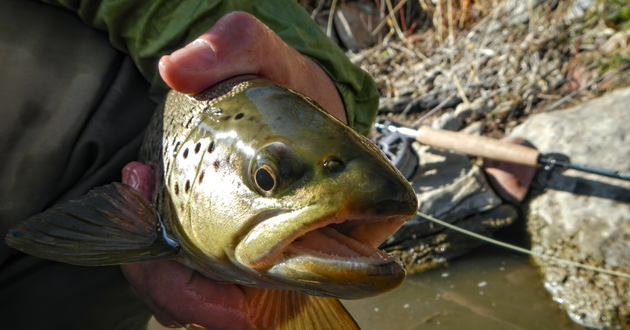
Catch and release is a method of fishing where the fish is caught, but instead of being kept for food or other purposes, it is returned to the water unharmed.
In most cases, catch and release do not kill fish. However, there are some situations where the fish may die after being caught and released. This can happen if the fish is handled improperly, has been out of water for too long, or has been injured during the catch.
For catch and release to be successful, it is important to handle the fish gently and carefully and to return it to the water as quickly as possible. It is also a good idea to use a hook that can be easily removed and release the fish in a body of water suitable for its species.
By following these guidelines, you can help to ensure that catch-and-release fishing is a sustainable and responsible activity that does not harm the fish population.
Does fishing hurt fish mouth?
Yes, fishing can hurt a fish’s mouth. When a fish is caught on a hook, the hook can penetrate the fish’s mouth or jaw, causing injury and pain. The fish may also struggle and thrash around while reeling in, damaging its mouth and other parts of its body.
But what can you do to not hurt the fish while fly fishing?
You need to handle fish with care, using proper techniques and equipment to minimize harm to the fish. This includes using barbless hooks and releasing fish back into the water as quickly and gently as possible.
You may also like: Do fish feel pain when they get hooked? Like humans do?
Survival rate of catch and release fish
The survival rate of catch-and-release fish varies depending on the species of fish, the method of capture, and the handling practices of the angler. Studies have shown that the survival rate of catch-and-release fish can be 5-20%. However, In Fly fishing the rate goes up to 70-95%.
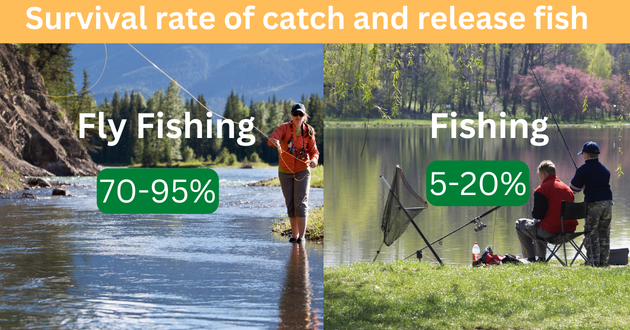
Factors that can impact the survival rate of catch and release fish include:
| The type of fish | Some fish species are more sensitive to handling and are more likely to die after being released, while others are more resilient. |
| The method of capture | Fish caught with hooks can suffer injury to their mouth, gills, or other internal organs, reducing their chances of survival. |
| The handling practices of the angler | Improper handling, such as leaving the fish out of water for too long or handling them roughly, can reduce their chances of survival. |
You need to handle fish carefully and follow proper catch and release practices to maximize the survival rate of released fish.
Read also: Does Catch and Release Hurt Fish? [Best Practices]
The Physical Impact During Catch and Release
Many anglers believe that catch-and-release fishing is a harmless practice for the fish. They argue that they are simply catching the fish, admiring its beauty, and then returning it back to the water unharmed.
However, this argument is not entirely accurate. During the catch and release process, fish experience significant physiological stress which can be fatal in some cases.
The process of being caught alone can cause exhaustion, dehydration and even physical injuries such as scraping or tearing of delicate mouth tissue. Additionally, being out of water for too long can result in suffocation or “bursting” of internal organs due to changes in pressure.
Potential for Injury or Mortality
The potential for injury or mortality increases substantially when improper techniques are used during catch and release practices. Many anglers do not handle fish properly during the process; they may use dry hands to hold onto them which can damage their scales and protective slime layer making them more vulnerable to infections by bacteria or parasites. Overhandling fish can also cause lactic acid buildup which leads to muscle fatigue resulting in inability to swim away from predators once released.
Moreover, improperly tied or weighted flies can result in deep hook sets causing severe damage to vital organs such as gills or stomachs thus leading to death. This happens because when a hook is pulled out of a fish’s mouth it often causes damage to surrounding tissues leading them prone harmful infections.
Some Methods May Be More Harmful Than Others
While many techniques are considered acceptable when it comes fly fishing some methods may be more harmful than others; particularly those involving barbed hooks that make it harder for a flyfisherman dislodge from the mouth of a hooked fish (even if using safe forceps), along with trolling where hooks frequently drag along the bottom of the river or lake and may be more prone to deep hooking. Using a debarbed hook is a recommended best practice that minimizes damage and reduces mortality. Additionally, by changing to playing fish with a softer touch, and giving them enough time to recover after being netted, will help in reducing damage during catch-and-release process.
Overall, while catching fish can be an exhilarating experience for anglers, it is important to remember that it can also have significant impacts on the health and wellbeing of the fish. Proper techniques should always be used during catch and release practices in order to minimize harm as much as possible.
Catch and release fishing laws
In many jurisdictions, catch-and-release fishing is regulated by laws that specify the conditions under which it is allowed and the steps that must be taken to ensure that the fish are returned to the water in a healthy condition. These laws may vary depending on the species of fish being caught, the location of the fishing, and other factors.
Some of them are –
- Using proper fishing equipment,
- Limiting the size or number of fish,
- and Prohibiting certain fishing methods (netting or electrofishing).
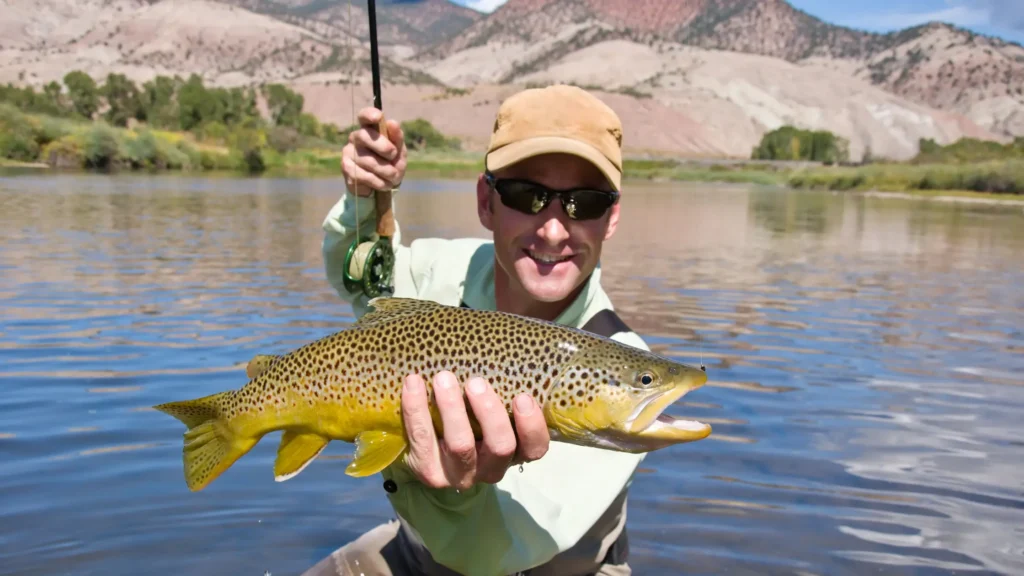
Do fish feel pain or fear?
According to the NCBI (National Center for Biotechnology Information), fish do not feel pain. However, most people think fish feel pain and fear while fly fishing.
When a fish is caught on a hook and struggles to escape, it can experience physical pain and stress. But if you catch up the right way, there are no chances of feeling pain.
The unfamiliar and potentially threatening environment of being caught and handled by a human can cause the fish to feel fear.
Read also: Where to donate fishing gear?
Alternative Methods to not hurt fish
Fly fishing may be the traditional method, but it’s certainly not the only one. In recent years, tenkara has gained popularity as an alternative method that could solve many of the issues associated with fly fishing.
Tenkara is a Japanese-style of fly fishing that involves using a long, telescoping rod without a reel. Instead of casting and reeling in line, anglers use a series of delicate movements to manipulate their bait and catch fish.
One significant benefit of tenkara is its simplicity. With no reel or complicated setup required, anglers can focus on their technique and connection with nature rather than worrying about equipment failure or maintenance.
Additionally, tenkara minimizes potential harm to fish by eliminating the need to fight against a hooked fish with a reel. This means faster catch-and-release times and less stress on fish.
While some may argue that tenkara lacks versatility compared to traditional fly fishing methods, its ability to successfully catch various species in different environments proves otherwise. Furthermore, its simplicity allows for greater adaptability and creativity among anglers who must rely on their own skills to make up for any potential shortcomings.
Baitcasting: The Underappreciated Method
Another alternative method that often gets overlooked is baitcasting. While it may not be as elegant or romanticized as fly fishing or tenkara, baitcasting offers distinct advantages that cannot be ignored.
For starters, baitcasting allows for greater accuracy and control when casting your line towards specific targets such as structure or cover where fish are likely hiding. This method also gives anglers more power when fighting against larger fish species such as bass or pike.
But perhaps most importantly, baitcasting significantly reduces the risk of harming fish during catch-and-release due to its ability to quickly set hooks with little slack line left. This means fish spend less time with hooks in their mouth, resulting in a quicker and less stressful release.
Despite these benefits, baitcasting often gets a bad reputation due to the perceived difficulty of learning this method. However, with enough practice and patience, anglers can reap the rewards of using this alternative method.
The Veiled Suggestion
While traditional fly fishing certainly has its merits, alternative methods such as tenkara or baitcasting offer solutions to many of the issues associated with fly fishing. Whether it’s reducing potential harm to fish through faster catch-and-release times or improving accuracy and control when casting your line towards specific targets, these alternative methods deserve more recognition for their practicality and effectiveness. As an angler who cares about both my own experience on the water and the well-being of the fish I catch, I believe it’s time for a shift in mindset regarding what constitutes “proper” fly fishing.
Ultimately, we all have a responsibility to ensure that our actions on the water are ethical and sustainable. Let’s embrace alternative methods that offer solutions to longstanding issues rather than clinging solely to tradition for tradition’s sake.
More about Fly Fishing
- What’s The Difference Between Fly Fishing And Regular Fishing?
- What months are best for fly fishing?
- How Long Will It Take To Learn To Fly Fish?
Final thougts
The question of, does fly fishing hurt fish? It is a complex one with no straightforward answer. While it is true that fly fishing can potentially cause harm to fish, several measures can be taken to minimize this risk. Your responsibility to ensure fly fishing is done humanely and sustainably lies with the angler.
Fly fishing is a beautiful and timeless sport enjoyed by many. It connects us to nature in a way that few other activities can. However, it is important to remember that with this enjoyment comes responsibility.
As anglers, we have a duty to consider the impact of our actions on fish populations and ecosystems. While there may be no perfect solution when it comes to fly fishing and its impact on fish, there are certainly steps that we can take towards responsible angling practices.
Let us continue to enjoy this wonderful pastime while always keeping in mind the importance of conservation efforts and responsible catch-and-release practices. Through education, awareness, and taking action today we can ensure that future generations have access to these same opportunities for enjoyment.
